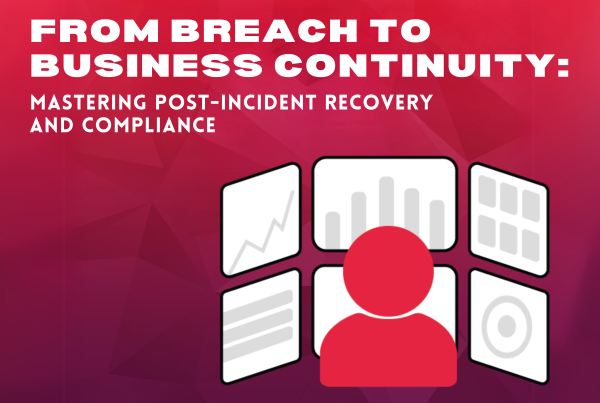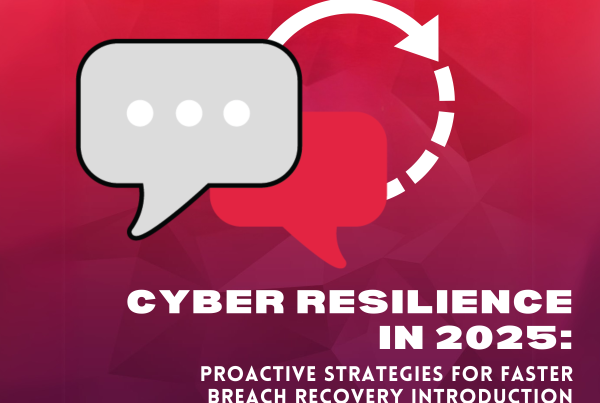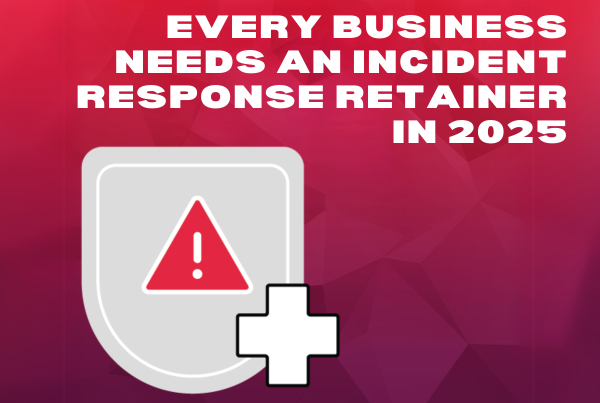With the rise of social media platforms, users can share their lives with one another. They divulge personal information for others to see, not fully realizing the dangers that the internet holds. Hackers can take advantage of this and use information that a user shared against them.
Spoofing is a cyberattack that many hackers use to acquire personal data by impersonating a friend, a relative, or a legitimate business. By using familiar names or contact information, hackers can trick unsuspecting victims into disclosing personal information, such as credit card details or login credentials, or to spread malware. Spoofing allows threat actors to hide their identity and disguise themselves as someone reliable to gain the trust of their targets.
Spoofers will impersonate banks, credit card companies and also use familiar domain names or IP addresses for their schemes. Often, hackers use email spoofing but there are other types of spoofing that cybercriminals use for their benefit.
Types of Spoofing
- Email Spoofing
This technique involves a seemingly harmless email that appears to be sent by a legitimate sender. Spoofers will manipulate an email address and email header to look more believable to their targets, creating emails that are legit looking by changing a few letters in the name. They can use a relative, a friend, or other legitimate source’s information to garner more credibility. The emails will ask for private information such as passwords, banking details, and such— however, they can also send malicious links or attachments that can corrupt a user’s computer.
- Website Spoofing
As technology progresses, so do the methods and skills of cybercriminals. Nowadays, hackers can create “carbon-copy” fake websites of trusted companies and organizations with intentions to spread malware or steal personal information. They can mimic the layout and branding of legitimate web pages, making them hard to detect. This method is used together with phishing emails that help lure targets into clicking the malicious link.
- Caller ID Spoofing
An old school method that is still used to this day. Spoofers fabricate caller details that a person sees on their phone and will change the number based on the geographical location. Hackers will use call details of someone a target knows or a representative of a company. Caller ID spoofing aims to trick targets into revealing sensitive information or paying non-existent bills.
- IP Spoofing
For this attack, hackers use tools to modify the source address to make the receiving system think it is from a trusted source. It hides the IP address to conceal the location of the hacker’s computer and gain access to systems that accepts the IP address. At times, hackers will also flood a network with traffic which will overwhelm the servers and shut them down. Hackers will then take this opportunity to get into the system to spread malware or steal sensitive data.
- DNS Spoofing
Domain Name Server can be described as the yellow pages of the internet. The DNS is responsible for directing a user to the specific IP address that they are looking for (e.i. google.com or facebook.com). DNS spoofing is a type of attack that alters the DNS records to redirect users to a fake website that resembles the intended site. The goal of hackers is to trick victims into revealing their login credentials and other sensitive information and to install and spread viruses on a victim’s computer.
How to Prevent Spoofing
With the growing number of threats in recent times, users and companies alike need to learn how to prevent and protect themselves against spoofing attacks. Here are some tips to help you:
- Be vigilant
Pay attention to the sender’s address since scammers will create ones that are similar to relatives, friends, or legitimate businesses. Be cautious of any attachments from an unknown sender or suspicious emails since they may contain harmful viruses. If you receive any call from an unknown number, don’t pick up and verify the caller first.
Always keep an eye out for common signs of spoofing to avoid falling for these scams. One sign to look out for are emails with grammatical errors and spelling mistakes. Since professional emails are well written, receiving an email or message of any kind that is poorly written should be a red flag. Another sign is a message that contain content that evokes panic or needs urgent action.
- Double-Check
If you’re in doubt, always double-check the credibility of a sender. If they are asking for sensitive information like credit card or login details, go to the actual website and email or call the number on the site to confirm. Also, double check the URL of a website and see if there are any spelling errors or signs of tampering.
- Change your password frequently
It is important to regularly change passwords, especially if a hacker managed to get their hands on your login details. When creating one, make sure that it is hard to guess to help your account stay secure.
- Install protection
Another way to prevent spoofing is to download trusted antivirus software. Nowadays, there are advance software that detect threats in real-time. There are also anti-spoofing software that can detect common types of spoofing attacks and help identify and stop attacks on their tracks.
- Education
Being informed and informing others about the dangers and the characteristics of spoofing attacks can greatly help reduce the likelihood of a compromise. For individuals, it is important to do research on the different types of attacks there are and the signs that can help detect it on emails, websites and etc. For companies, educating employees and setting up guidelines on how to approach emails, calls, websites and etc. can be set in place for security. Companies can also create campaigns to inform and give awareness to the different methods of spoofing and other cyberattacks.
Conclusion
Spoofing is seemingly simple and harmless but the reality is the effects of these attacks can be devastating for users alike. Cybercrimes are profit-motived attacks that take advantage of the vulnerabilities of others to gain more. Spoofing plays with the emotions of victims by gaining their trust and confidence and it is still a constantly evolving threat to this day. It is important to stay vigilant and keep security awareness in mind to prevent any attacks from happening to you or your company.
References:
Kagan, Julia. “Spoofing.” Investopedia, 26 July 2020, www.investopedia.com/terms/s/spoofing.asp.
Ariano, Ryan. “What Is Spoofing? Understanding the Type of Cyber Attack and How You Can Protect Yourself against It.” Business Insider, 24 July 2021, www.businessinsider.in/tech/how-to/what-is-spoofing-understanding-the-type-of-cyber-attack-and-how-you-can-protect-yourself-against-it/articleshow/84695568.cms.
Balaban, David. “11 Types of Spoofing Attacks Every Security Professional Should Know About.” 2020-03-24 | Security Magazine, 24 Mar. 2020, www.securitymagazine.com/articles/91980-types-of-spoofing-attacks-every-security-professional-should-know-about.


